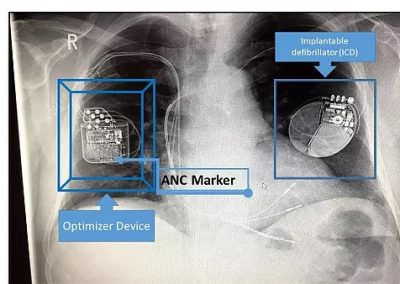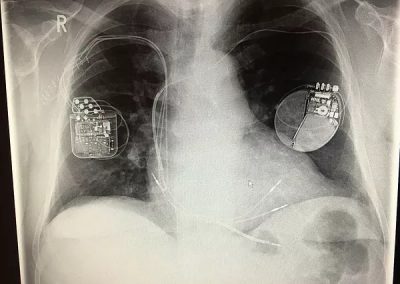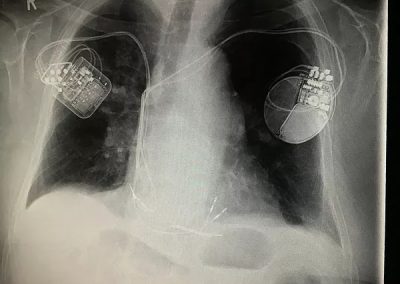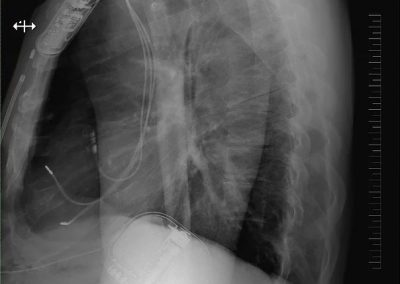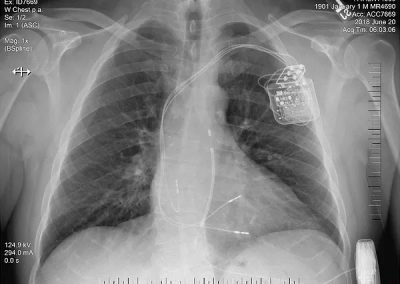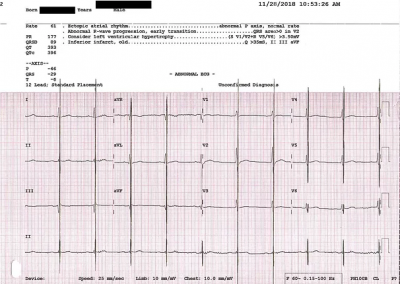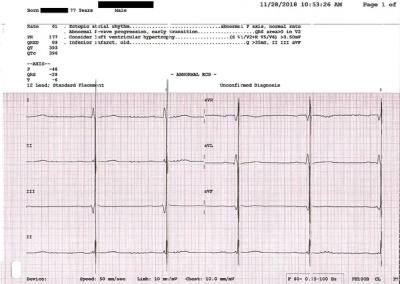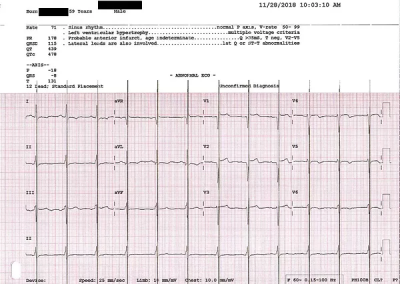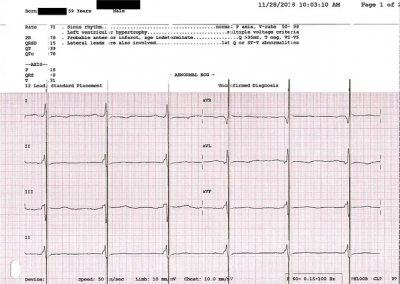CCM INFORMATION
Cardiac Contractility Modulation
Therapy for chronic heart failure
Cardiac Contractility Modulation is a therapy which is intended for the treatment of patients with moderate to severe chronic heart failure (NYHA class III–IV), LVEF 25-45% and QRS <130ms with symptoms despite optimal medical therapy. The short and long-term use of this therapy may enhance the strength of ventricular contraction and therefore the heart’s pumping capacity by modulating (adjusting) the myocardial contractility.
The Cardiac Contractility Modulation treatment is delivered by a pacemaker-like device that applies non-excitatory electrical signals (NES), adjusted to and synchronized with the electrical action in the patients cardiac cycle. Unlike cardiac pacing, which delivers an electrical signal with the intention to result in cardiac contraction, the Cardiac Contractility Modulation treatment delivers its electrical stimulation during the absolute refractory period and does not cause a cardiac muscle contraction.
In contrast to other electrical stimulation treatments for heart failure, such as pacemaker therapy (CRT-P) or implantable cardioverter defibrillators (CRT-D), Cardiac Contractility Modulation does not affect the cardiac rhythm directly.
The Optimizer® Smart Implantable Pulse Generator (IPG) unit is a rechargeable device that senses the heart’s electrical activity and delivers Cardiac Contractility Modulation signals during the absolute refractory period (just after the heart contracts) via two electrodes placed in the heart’s right ventricle. There is also a lead placed in the right atrium to assist with the therapy timing cycle. The IPG is about the size of a pacemaker IPG. There are several earlier versions of the Optimizer® System, including the Optimizer® III and Optimizer® IVs.
Optimizer® Smart Charger System. Patients can recharge the IPG unit using a portable, home-based charger system, without supervision. Charging the device on a weekly basis assures it has enough energy to provide the prescribed dose of Cardiac Contractility Modulation therapy. The charger includes a display that provides instructions and numerical feedback codes to the patient about the charging process and device behavior. A list of these codes is provided below.

EMERGENCY OPERATIONS:
To disable the delivery of CCM® therapy:
Placing a commonly available pacemaker ring magnet over the implant site of the Optimizer® IPG and maintaining it in close proximity to the device for at least two cardiac cycles (2–3 seconds), sets the Optimizer® Smart IPG into a Permanent Off state. This Permanent Off state is maintained even after the magnet is removed from the implant site.
In this “off” state, the Optimizer® Smart IPG does not deliver CCM signals, although it continues to sense and classify cardiac events. This Permanent Off state can be changed only by reprogramming the Optimizer® Smart IPG using the OMNI Smart Programmer software under physician supervision. Reapplication of the magnet over the Optimizer® device will not restart CCM therapy.
Note: This feature is useful for turning off CCM signal delivery when an OMNI Smart Programmer is not available (for example, when a STAT ECG needs to be performed on a patient in an Emergency Room not equipped with an OMNI Smart Programmer).
Magnetic Resonance Imaging (MRI):
To be on the safe side, patients with an implanted OPTIMIZER Smart IPG should not be exposed to magnetic resonance devices. The powerful magnetic fields and electromagnetic signals used with magnetic resonance techniques can cause the OPTIMIZER Smart IPG to inhibit CCM signal delivery or to revert to its “DOWN” mode [Standby (OOO) mode, with no delivery of CCM] with the possible loss of statistical data. There is also a risk of device or lead heating or device migration, as well as the induction of dangerous currents in the implanted leads. Although unlikely, the circuitry of the device could also be damaged.
Mini Charger Numerical Codes:
The Optimizer® Mini Charger was designed to provide the patient with certain data and warnings appropriate to the situation. If the charger detects a situation that requires action, a single digit code will appear on the “Call Doctor” Indicator, seen in the photo above located just above the “red cross”. The following table gives a description of each numerical code a patient may receive:


Optimizer® device identification utilizing a chest X-ray:
The Optimizer® casing houses a battery, circuitry, connector pins and a copper charging coil, which forms a specific pattern radiographically. This configuration is unique for the CCM device. As well, a device-specific radiopaque alphanumeric code (ANC) is embedded into the Optimizer® Devices. The radiopaque ANC code as marked into the device for identification of the various models is outlined below. Please note “y” below denotes year, and is replaced by a letter code for year of manufacture in an actual device.

More Questions on the Optimizer® Smart System

© 2024 Impulse Dynamics Terms of Use | Data Protection | Imprint | Privacy Policy
